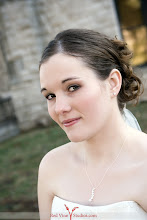Tuesday, April 28, 2009
Response to Nick Baker's Journal on The Bewitched
When I first sat down to listen to Harry Partch’s The Bewitched, I had no idea what I was getting myself into. Sure, I was vaguely familiar with some of Partch’s instruments like the spoils of war, the boo, and the cloud chamber, but I had no idea the extent to which he could create an entire drama that was over an hour in length. In Nick Baker’s journal, he describes The Bewitched as “fresh” and mentioned being hooked after only the first few notes. I can understand why Nick, as a percussionist, would be so interested in this mostly percussive work. However, I admit I am a bit more traditional and cannot say that I love this work. However, as I listened to it, I slowly began to understand the piece and Partch’s reasons for making a work in the corporeal style.
This sense of the visual is brought out greatly by the added dancers and theatrical way he places all of the musicians on stage. The story is not just in the music, but also in the facial expressions of all on stage and their movements. The “Lost Chorus of Musicians” are also actors in the story. These things combine to create an experience, one that we cannot truly get unless we were to see the entire performance, dancers and all. Nick does a wonderful job of explaining the background of the work and the pieces of the puzzle, however an equally important part of this Dance Satire is the dancers and the motion.
As Nick points out, the tuning and instrumentation is far from ordinary. While the music does seem abstract, it does not seem “out of tune” to the listener. Indeed, there are many moments of juxtaposition in Partch’s work. For example, in the scene “Exercises of Harmony and Counterpoint in a Court of Ancient Rituals,” normal sounding instruments like the clarinet and adapted viola play rather beautiful melodies in a traditional manner. The comfort of the familiar is offset by the entrance of Partch’s own instruments, presenting a tribal and primitive sound. This continues back and forth, alluding to the old way of music making and presenting the new.
The concept behind Partch’s musical instrument production is intended to imitate the simplest origins of music. “Primitive man found magical sounds in the materials around him—in a reed, a piece of bamboo, a particular piece of wood held in a certain way, or a skin stretched over a gourd or a tortoise shell—some resonating body. He then proceeded to make the object, the vehicle, the instrument, as visually beautiful as possible” (Partch). The beauty of these unique instruments is that they are made from ordinary things but produce extraordinary sounds. Nick is right when he says that the options in music making are made limitless. Partch opens up something completely new to our ears, but at the same time it was always right at our fingertips.
I could definitely see The Bewitched as a standard part of our canon, as it makes political and social statements in a new and passionate way. The reasons for its exclusion may simply be in the difficulty of producing this work. Not only are dancers and musicians needed, Partch’s instruments are important in order make this piece distinct. Because instruments like the chromelodeon and the adapted viola are not easily accessible, this piece is very hard to perform.
On the subject of letting old European traditions die, I would disagree. Nick makes a final statement that “if anything should pass, it should be the stale European derived forms of the concert hall that composers continue to write to please audiences and musicians that are scared to get out of their suits.” While I believe we should always strive for new ideas and concepts, pleasing the audience is something that cannot be overlooked. If there are no listeners, music ceases to be important. I understand that satisfying one’s musical soul is necessary, however the ultimate goal should be to bring people closer together through music, whether it be as “tradional” as Bach, or as new-fangled as Partch.
Subscribe to:
Post Comments (Atom)

No comments:
Post a Comment